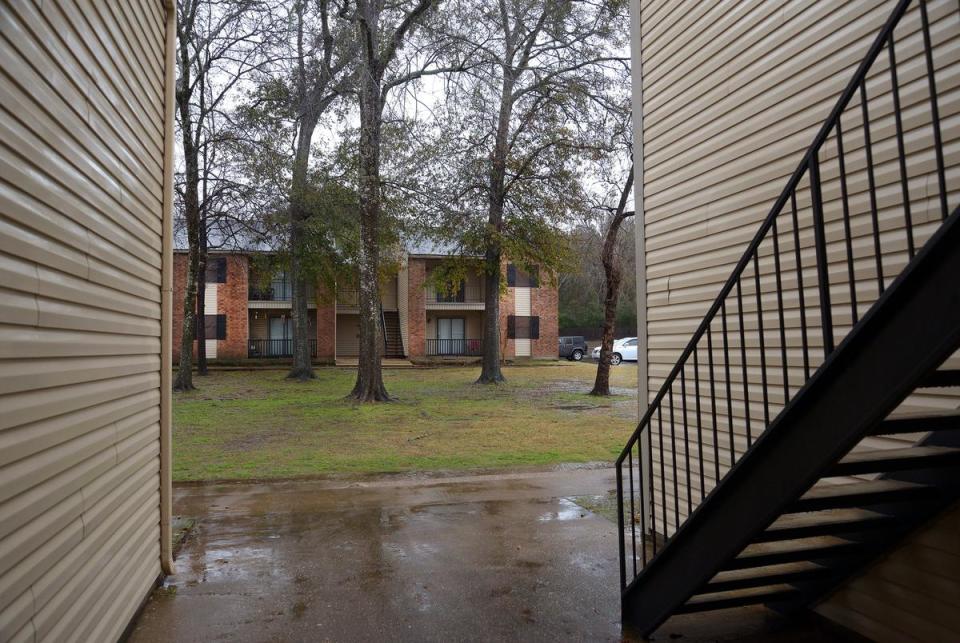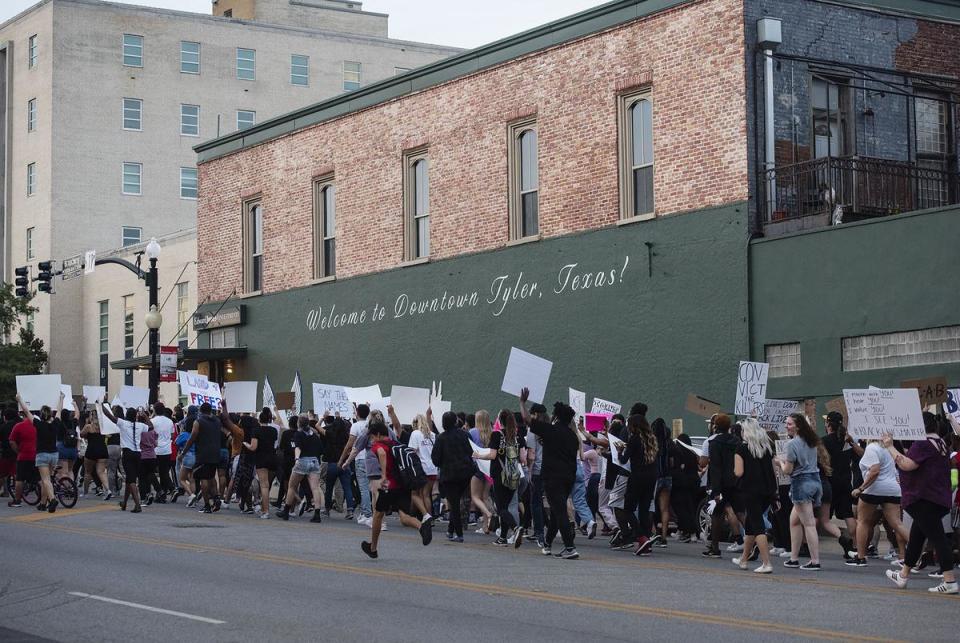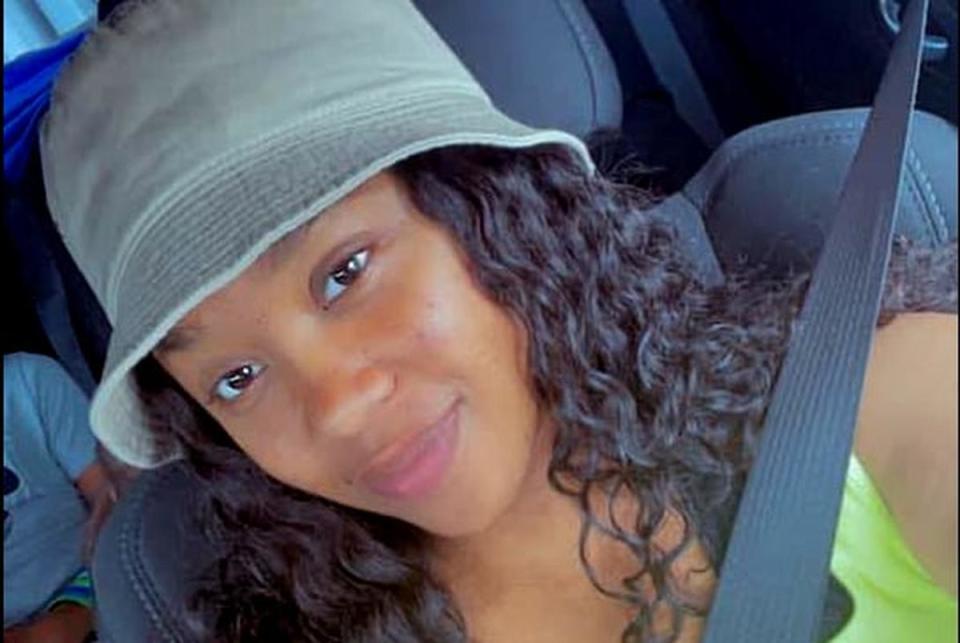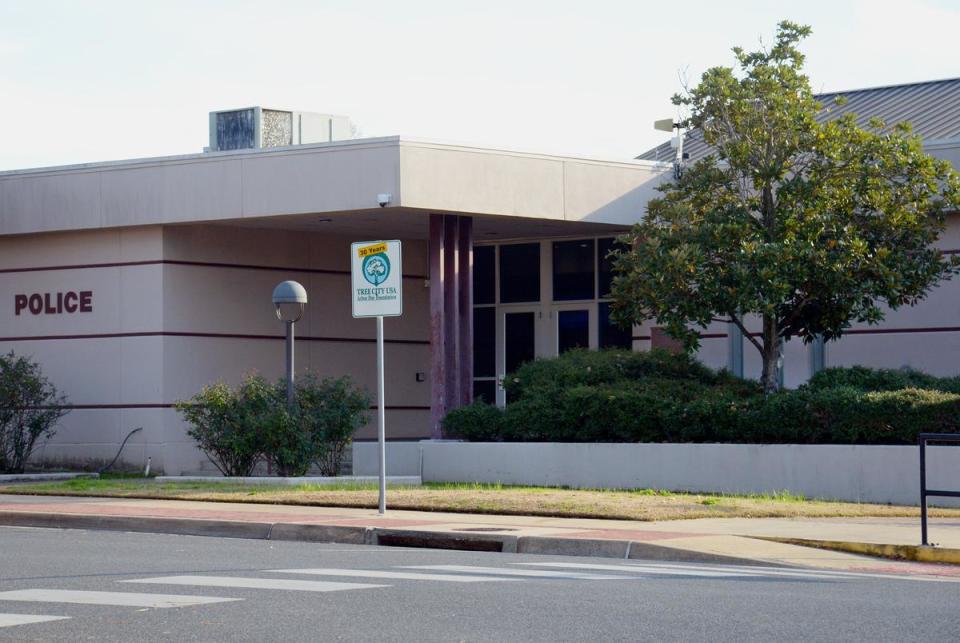Three years after BLM protests gripped nation, a police shooting in Lufkin draws little attention
Correction, Feb. 7, 2024 at 5:35 p.m. : An earlier version of this story incorrectly described in one instance the lead-up to the shooting of Aaliyah Anders. Officer Lauren Nick rang Anders' doorbell; she didn't knock on the door. The article has also been updated to correct that Lufkin City Council member Guessippina Bonner was in Los Angeles when Rodney King was beaten.

LUFKIN — It was two days after Christmas and Aaliyah Anders was terrified. Her Lufkin apartment complex had become ground zero for a viral TikTok challenge. Kids, following the social media trend, were running up and kicking in the doors to apartments into the late evening. Having had enough, Anders called the police.
When she arrived, Officer Lauren Nick rang Anders' doorbell. Fed up, Anders, who is Black, grabbed her own gun, opened the door and charged, yelling. The officer shot her dead.
Anders was one of 1,346 people killed by police last year, according to the Mapping Police Violence database that tracks such deaths. Hers was the last fatality reported in Texas, according to the database for police shootings.
Unlike the high profile deaths of George Floyd, Breonna Taylor or Ahmaud Arbery, few are marching in the street for Anders and others killed by police last year — a record year according to the Mapping Police Violence database that began tracking such deaths in 2013.
The lack of nationwide public protests that for a short while followed so many deaths like Anders’ can be attributed, in part, to a lack of news coverage, experts said.
Researchers have determined there is an inextricable link between media coverage and civic engagement, especially as it pertains to violence against Black people. But the media, across the board, is undergoing a significant change, said University of Houston Assistant Professor Gheni Platenburg, whose research focuses on the intersection of Black identity and media.
[George Floyd killing energizes a new generation in fight against racism in East Texas]
This transition is caused by a few things: Changes in readership due to news fatigue require agencies to adjust what and how they report on stories; local and national outlets struggle to maintain staff, either due to layoffs or turnover, and are left with tough editorial decisions; and a lack of representation of Black journalists in media across the board means stories affecting people of color often go unreported.
And, at least in Lufkin, local Black leaders decided not to press authorities after Anders’ death due to an exceptional amount of transparency.
Lufkin City Council member Guessippina Bonner was a civil rights activist in the 1960s. She was in Los Angeles during the riots following the brutal beating of Rodney King in the 1990s and she was in East Texas when residents took to the streets following the murder of George Floyd.
She has noticed a change within her community, and across the board, as people have stopped questioning the status quo or demanding change. People don’t protest like they used to, she said. People of color feel more helpless in light of an ever growing issue, and they don’t believe their voices will be heard, or broadcast accurately on a larger scale.

And as local news media continues to decline, especially in rural areas, the connection between communities and their news reporters are also in decline. Lufkin, which used to be represented by a fully staffed daily newspaper and TV station, now mainly sees news coming out of Tyler, which is 83 miles away, while the local paper fights to keep up with the entirety of Angelina County.
Bonner used to know who to call when she needed to contact a reporter, but those connections are mostly gone. So when something important happens, it often goes on without much being said.
“I mean, who is going to cover it?” she asked.
Gary Roberts, a Nacogdoches artist and activist, echoed Bonner. He said he doesn’t understand why — given the increase in the number of people killed by police — more news coverage isn’t dedicated to it.
"People are getting tired of all the police involved shootings,” he said. “And it's not getting any better."
Mother remembered as entrepreneur, dedicated to kindness
Anders was home with her 2-year-old child when she called the police department.
“(Anders) was told that an officer would respond to the apartment,” Chief David Thomas said in an official statement following the incident.

After ringing the doorbell, Nick, the Lufkin officer, stepped back from the door and continued to scan the area. Anders opened the door to find a bright flashlight in her face. She screamed and brandished her gun at the officer. Nick shot Anders four times. Anders died later at the hospital.
Neighbor Alice Abrego was home the night Anders lost her life, she remembers hearing the child’s father’s cries from the back of the police car after Anders was shot. He couldn’t understand why the situation escalated as it did, she said.
At a memorial service held by the Reed Chapel Baptist Church in San Augustine, Anders’ family remembered the woman as an entrepreneur, a food lover and a woman dedicated to kindness and empathy. Hundreds attended the service online and in person, many wearing pink — her favorite color.
Anders’ apartment complex, Great Oaks, is a relatively peaceful and quiet community outside Loop 287 on the southwest side of Lufkin. Residents walk confidently around the complex throughout the day and evening, a courtyard plays host to small football games, kids playing tag or residents walking their dogs. The pool is well-kept and popular throughout the summer.
Police had responded to issues of theft or complaints about teenagers at the complex over the months leading up to the shooting, according to reports provided by the department.
Local teenagers terrorized the Great Oaks community for months by kicking their doors. Residents felt like the teens were trying to break in. Lufkin Police received multiple calls about this. Anders’ apartment was repeatedly targeted, especially the night of the shooting.
Abrego said she understood Anders’ fear and had charged her own front door one night when it was targeted.
“My legs were shaking, trembling. And it was a shock to my nerves,” she said.
Abrego thought it was only a matter of time before the situation escalated to this point, she said. And while the attacks have ceased since the shooting, she worries they will start happening again, and the outcome will be worse.
Shrinking news organizations play a role
Nick was placed on leave while the Texas Rangers investigated the situation. Lufkin Police released all of the body cam footage as well as footage from Anders’ Ring Doorbell camera the next day.
The Lufkin NAACP considered pursuing a civil case against the city, but ultimately decided against it. Local civic activists say the police department acted with integrity and transparency and that Anders shouldn’t have approached the officer with a gun. Community leaders were brought in to review the footage before it was released and police were clear about the investigation and consequences, said East Texas NAACP legal redress Pastor Desmond Tolbert.
“We're lucky here,” he said. “I've worked in cities before, I worked in Houston and other cities. The Lufkin Police Department was very transparent in this situation. They called leaders in the community to come out to take a look at the video before they released it to the public. They did not have to do so.”
Anders’ was the last person killed by police in Texas last year, according to the Mapping Police Violence. Of the 141 people killed by Texas police last year, 33 were white, 22 were Black, 50 were Hispanic, and two were Asian. Others had no reported race or ethnicity.

The Texas Demographic Center estimates white people made up 41% of the population, Hispanic people made up 39.6% of the population and Black people made up 11.9% of the population in 2023.
The mapping project estimated that Black people were more than two times likely to be killed by police than white people last year.
None of those shootings made headlines outside of the state, few reached Texas’ larger news agencies — including The Texas Tribune — and a majority of those that did were in the communities the news agencies represented, based on a review of news headlines by the Tribune.
For example, Houston also had officer involved shootings in 2023. The fatal shooting of Edgar De Leon, an unarmed 46-year-old Hispanic man, was covered by the Houston Landing and ABC 13 Houston but failed to reach national attention.
“As we're talking about coverage of people who may be injured or killed in interactions with police – if it's a person of color then, depending who's in the newsroom, they may or may not see that story as having enough weight or enough value to decide to cover in comparison to others stories,” University of Houston Professor Gheni Platenburg said.
And these stories are often told in a similar manner to “parachute journalism” where a reporter steps into a community they’re not a part of and fails to recognize the historical implications of a story. In other instances, larger news organizations will aggregate local coverage and conduct phone interviews from afar to fill in some gaps.
The slow dissolution of the Black press after decades of serving African-Americans has further promoted this idea in the minds of black readers, Platenburg said. They now look to mainstream media for information, but find their stories told without compassion or the necessary background – if they’re told at all.
A Marshall Project investigation in 2021 determined rural shootings often occur at high rates for their population, but often go without the attention and protests that urban shootings draw. Platenburg, who lives in Houston, heard “some rumblings” about Anders’ death but didn’t begin to look at it until contacted by the Tribune.
News fatigue also plays a big role in stories that lose traction, readers are tired of learning all about what is wrong in the world, Platenburg said. They want solutions. They want to know what they can do.
Decades of research establishes an inextricable connection between media coverage and civil rights movements, such as those seen by followers of Martin Luther King Jr. and the Black Lives Matter movement. But this level of civic engagement is waning, as news fatigue and the belief that nothing will change becomes ever pervasive.
“They want to see reporting on different aspects of the story,” Platenburg said. “Meaning, yes, we know these individuals were killed or injured in these police encounters. But what’s next? What can we do? How can we prevent this from happening moving forward?”
Texas police have, according to the mapping project database, killed seven people so far in 2024.
Disclosure: University of Houston has been a financial supporter of The Texas Tribune, a nonprofit, nonpartisan news organization that is funded in part by donations from members, foundations and corporate sponsors. Financial supporters play no role in the Tribune's journalism. Find a complete list of them here.
We can’t wait to welcome you to downtown Austin Sept. 5-7 for the 2024 Texas Tribune Festival! Join us at Texas’ breakout politics and policy event as we dig into the 2024 elections, state and national politics, the state of democracy, and so much more. When tickets go on sale this spring, Tribune members will save big. Donate to join or renew today.

